Longest Blooming Daylilies
Longest blooming daylilies offer you three-month-blooming. They are a must-have for any garden. Gardeners love Daylilies due to their prolific flowering and low maintenance requirements. Why not have them bloom for months at a time? Some do, whether you want to believe it or not. Regarding reblooming daylilies, yellow or orange flowers with less than an inch diameter have long been considered the most reliable. However, flower and plant hybridizers have expanded the range of colors and sizes. There are also fragrant and double flowers available. As the summer progresses, more and more of these long-bloomers bloom earlier and extend into the fall. But sometimes, daylilies will not bloom, and there could be several reasons why your lilies are not blooming. One of the most common causes is insufficient sunlight. Lilies need at least 6 hours of direct sunlight daily to bloom correctly. Another possible reason could be over-fertilization, leading to excessive foliage growth but no flowers. Poor soil drainage, inadequate watering, and overcrowding of lilies are also factors that can prevent blooming. Identifying the underlying cause and taking the necessary steps to address it to encourage lily blooming is essential.
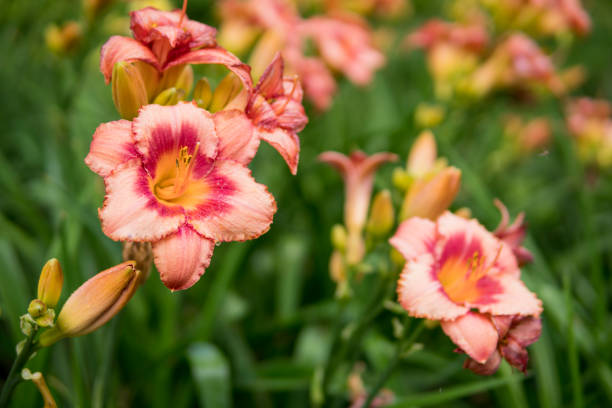
Table of Contents
Hybrid Categories for Daylilies
Color, form, size, stem height, and bloom time all classify daylily hybrids (Hemerocallis hybrids). Daylilies bloom early in the spring, especially the extra early and early varieties. Midseason daylilies bloom in the spring and early summer, and in the summer, late-season daylilies bloom. Late-blooming daylilies bloom from the end of summer into the beginning of the fall. To get continuous flowers throughout the season, you can plant everblooming daylilies in groups of three or more. Instead of blooming continuously throughout the season, they rebloom so frequently that it appears that they do.
Cool-Winter Daylilies
Cool-winter daylilies also bloom all season long and even in the winter, absolutely beautiful. Once you’ve tried them, you can order them again next year to make your display even more impressive. However, they can be somewhat challenging. Planting cool-winter daylilies in a new bed will take additional time and effort because you have to locate the area where the first set of bulbs bloomed from last spring into this fall to know when to replant them following their winter dormancy.
For optimal bulb performance, each stock type (cold-loving or warm) needs to lie on its side of the garden and not be buried between its opposite neighbors. The most popular colors are white or shades of light blue to dark blue with a widening base over three-quarters up each petal edge. It ranges from very pale lilac (deadly pure pink) to nearly black violet without indicating truly brightening even though they may look brighter when several grouped.
Warm-Winter Daylilies
You can plant daylilies any time of the year, but they’re most successful when allowed to grow over several weeks as baby plants. For best performance and production, each bulb (whether long-blooming or short-blooming) must lie on its side where it is accustomed to growing. Unlike cool-winter daylilies, which need winter dormancy for their bulbs to develop properly without frost damage, warm-winter daylilies must come into bloom each year for maximum flower production. In comparison, braver gardeners can attempt to plant adjacent bulbs of the same type in the early spring as new growth pushes up from their last year’s buds on a branch or stem stripped bare and rooted above ground. This is always a gamble since cold weather can kill plants during the winter months, followed by excessive heat in late summer days.
If planting bulbs, choose the largest variety in terms of number and size since stock that is too crowded in a bed may not produce excellent blooms. Light-colored (unless parti-color) short daylily varieties are ideal for winter growing. They bloom every year on top of dead season plant foliage and drooping terminal flower stems, forming neat rows around each bulb.
Long-Flowering Daylilies

Hemerocallis’ Variety is the Spice’
For 75 days, this rebloomer will produce nearly nonstop blooms. Among 50 “Lowers, 6 to 10 inches Midseason varieties are typically considered the most reliable. Dark red color with very few green areas and wide petals.
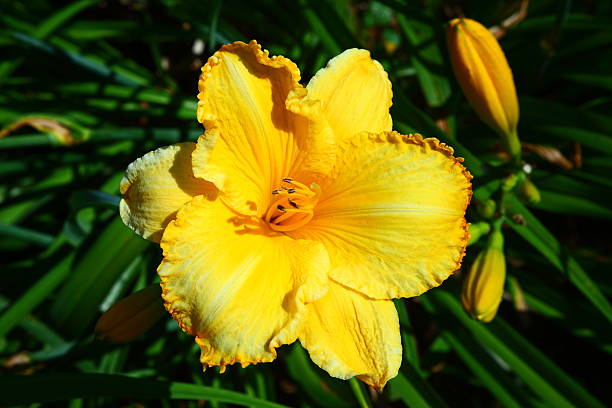
Hemerocallis ‘Miss Amelia’
When it comes to a long-blooming daylily, this is the one for you. The flowers on each plant last for over three months and are filled with a wonderful scent. It also grows quickly, so you can have a beautiful mass in a short period.
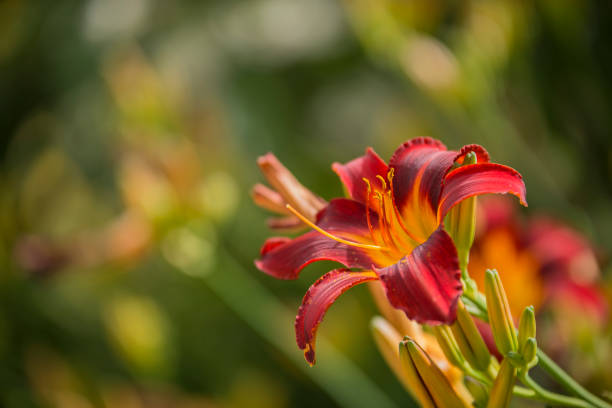
Hemerocallis’ Matt’s Gift’
This variety is a rebloomer and takes 75 days to bloom. These flowers are very large compared to other daylilies, measuring 1-3/4″ from top of petal tips with 2-inch stems. The standard foliage has lemon yellow hues and stands out during the early spring when it is young. They flower heavily on each plant as long as conditions allow by producing multiple blooms per stem opening at once!
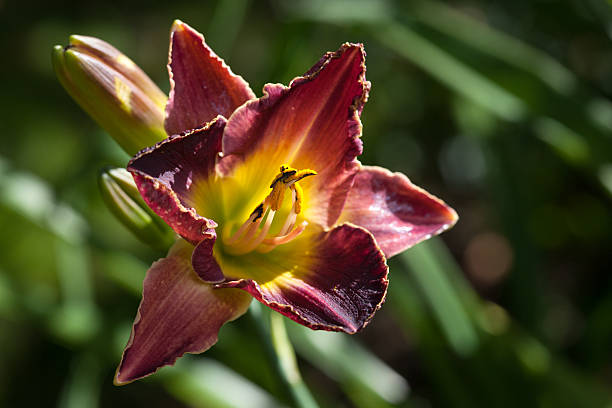
Hemerocallis’ Queen Caroline’
‘Queen Caroline’ is best enjoyed later in the summer when the flowers are in full bloom, and the scent is intoxicating. However, the wait is well worth it. They will reward you with beauty and enjoyment throughout the flower bud period.
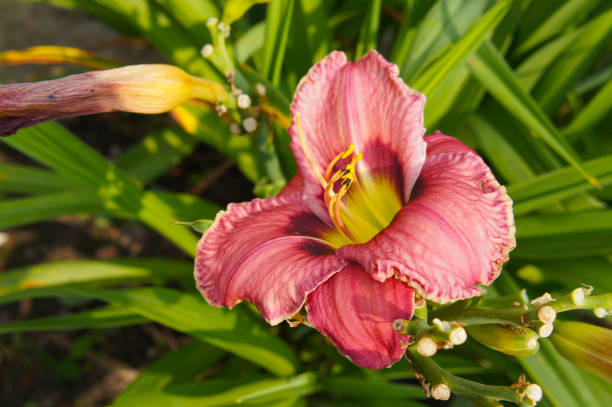
Hemerocallis’ Elegant Candy’
Beautiful and fragrant, ‘Elegant Candy “s’ bright blooms hold their color well. The red and green of the eye and throat and the ruffled edges make this a standout in the garden.

Hemerocallis’ Inwood’
Their scent and striking purple-plum eyes highlight this daylily’s flowers. It’s as if the plum-picoteed edges of the flowers have been compressed into a pie crust. There are 25 buds on each branch.

Hemerocallis ‘Lady Scarlet’
Plants of ‘Lady Scarlet’ produce an abundance of buds. This is one of the best red rebloomers, thanks to its vibrant hue and plush texture. Early to midsummer, the 6-inch scarlet red blooms produce an abundance of nectar. They are grown in USDA zones 4–10 and can tolerate some cold weather as long as they are not subject to prolonged freezes. They grow up to 24 inches and 18-24 inches in width.

Hemerocallis’ Wineberry Candy’
This daylily is an early spring bloomer and one of the longest-blooming daylilies. Blossoms that are soft pinkish peach in color have a wine purple eye. In the early summer, the flowers are carried by well-branched scapes
